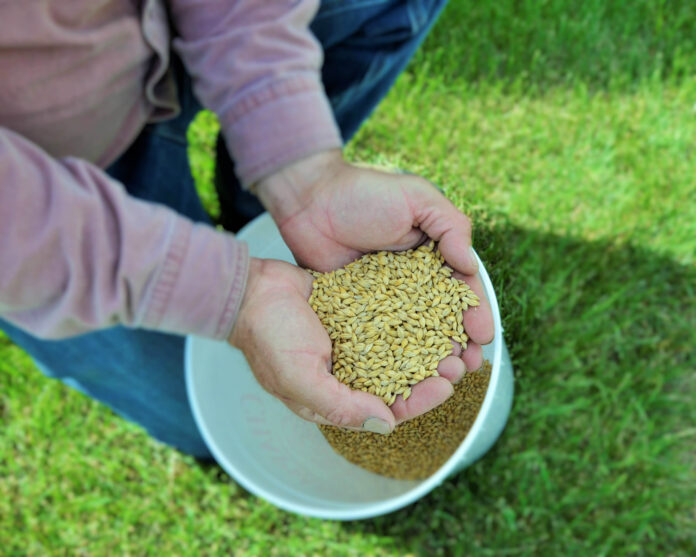by Kim Stonehouse
Saskatchewan Ministry of Agriculture
In grain production there are many calculations that are critical to the success of any crop. One that is both important and often misunderstood is the seeding rate calculation. This calculation ensures an optimal plant stand is achieved.
Research has shown that for every crop there is a specific target or target range of plant densities (see table) that will be most competitive with weeds. Planting crops at a sufficient rate to achieve this range will also reduce tillering to optimise fungicide timing, even out ripening and unify grain characteristics. All of these factors combined will allow each crop to realize a maximum yield potential, given the growing conditions of the season. Overall, seeding within the optimal range will ensure a foundation that has the best chance of achieving the greatest possible outcome.
Calculation of the correct seeding rate requires knowledge of four factors: target plant density, thousand kernel weight (TKW), germination and expected seedling survival. Once these are known you can use this calculation:
| Seeding rate (kg/ha) = | (target density(Plants/m2) x TKW(g) x 100) |
| (% Germination x % Expected seedling survival) |
Germination and TKW should be given on the seed tag for each seed lot. If not, a simple call to the seed supplier will get this information. In the case of farm-saved seed, submitting a sample to a seed lab for testing will determine these values. Both germination and TKW can vary significantly for different varieties and seed lots. Knowing and applying these values will go a long way to achieving the optimal plant density.
A number of publications and websites can provide target plant stand information. Depending on the source, crop and the units they are described in, target plant stand may be expressed as a single value or a range of values. If the value is given as a range and there are no previous in-field observations to support increasing or decreasing the amount; a good place to start will be right in the middle. Monitoring plant stands by doing some simple plant counts will allow for fine-tuning in future years.
Of all the factors, seedling survival is probably the most mysterious. In order to understand this factor, the elements that affect it need to be examined. Seedling survival depends on seed and plant vigour, soil moisture and temperature as well as the level and type of diseases present. For this reason, it is always given as a range. Some acceptable ranges are: 80 to 90 per cent for cereals with germination, greater than 90 per cent in good conditions, 40 to 60 per cent for oil seeds and 80 to 95 per cent for pulses depending on conditions. As with target plant stand, a good place to start when picking a seedling survival value is right in the middle. Again, this number can be fine-tuned with experience, adjusted up for years that have good planting conditions with good quality seed and down when conditions and seed quality are less than ideal.
Ultimately, seeding rate calculations are very simple, but choice of values to complete the equation is dependent on experience and conditions for each farm. Starting in the middle of each range for each crop will allow for adjustments up or down. Small changes in the chosen values from year to year or from field to field will help to fine-tune the calculation to achieve the best results.
For more information about calculating seeding rates, please contact your nearest crops extension specialist or call the Agriculture Knowledge Centre at 1-866-457-2377.


